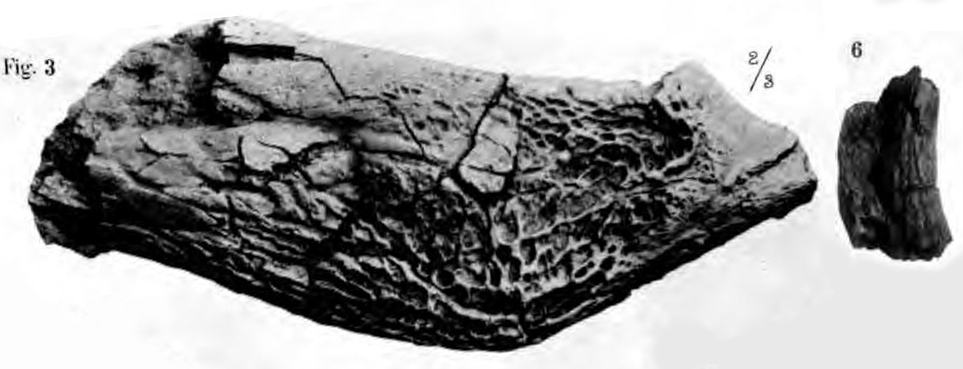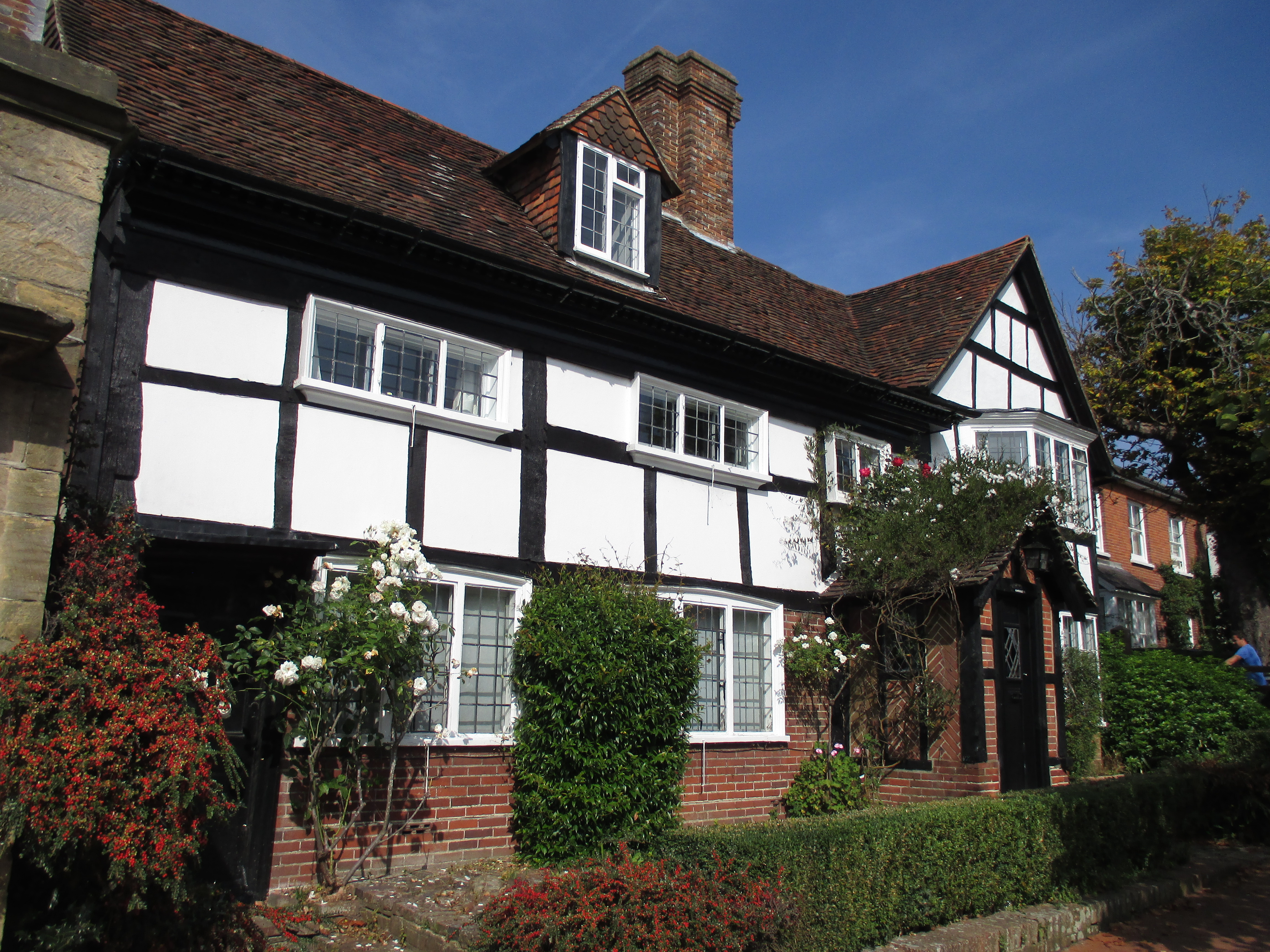|
Suchosaurus
''Suchosaurus'' (meaning "crocodile lizard") is a spinosaurid dinosaur from Cretaceous England and Portugal, originally believed to be a genus of crocodile. The type material, consisting of teeth, was used by British palaeontologist Richard Owen to name the species ''S. cultridens'' in 1841. Later in 1897, French palaeontologist Henri-Émile Sauvage named a second species, ''S. girardi'', based on two fragments from the mandible and one tooth discovered in Portugal. ''Suchosaurus'' is possibly a senior synonym of the contemporary spinosaurid ''Baryonyx'', but is usually considered a dubious name due to the paucity of its remains, and is considered an indeterminate baryonychine. In the Wadhurst Clay Formation of what is now southern England, ''Suchosaurus'' lived alongside other dinosaurs, as well as plesiosaurs, mammals, and crocodyliforms. History of discovery In about 1820, British palaeontologist Gideon Mantell acquired teeth discovered near Cuckfield in the Wadhurst Clay o ... [...More Info...] [...Related Items...] OR: [Wikipedia] [Google] [Baidu] |
Baryonyx
''Baryonyx'' () is a genus of theropod dinosaur which lived in the Barremian stage of the Early Cretaceous period, about 130–125 million years ago. The first skeleton was discovered in 1983 in the Smokejack Clay Pit, of Surrey, England, in sediments of the Weald Clay Formation, and became the holotype specimen of ''Baryonyx walkeri'', named by palaeontologists Alan J. Charig and Angela C. Milner in 1986. The generic name, ''Baryonyx'', means "heavy claw" and alludes to the animal's very large claw on the first finger; the specific name, ''walkeri'', refers to its discoverer, amateur fossil collector William J. Walker. The holotype specimen is one of the most complete theropod skeletons from the UK (and remains the most complete Spinosaurid), and its discovery attracted media attention. Specimens later discovered in other parts of the United Kingdom and Iberia have also been assigned to the genus, though many have since been moved to new genera. The holotype specimen, which m ... [...More Info...] [...Related Items...] OR: [Wikipedia] [Google] [Baidu] |
Baryonychine
Baryonychinae is an extinct clade or subfamily of spinosaurids from the Early Cretaceous (Valanginian-Albian) of Britain, Portugal, and Niger. In 2021, it consisted of six genera: '' Ceratosuchops'', ''Cristatusaurus'', ''Riparovenator'', ''Suchomimus'', ''Suchosaurus'', and ''Baryonyx'', the nominal genus. The clade was named by Charig & Milner in 1986 and defined by Sereno ''et al''. in 1998 and Holtz ''et al.'' in 2004 as all taxa more closely related to '' Baryonyx walkeri'' than to ''Spinosaurus aegyptiacus''. Baryonychines were large, bipedal predators with elongated, crocodile-like skulls and lower jaw tips fanning out into rosettes bearing conical, often unserrated, teeth, and a distinct premaxillary notch. They possessed robust forelimbs supporting three-fingered hands with an enlarged first digit claw, to which the subfamily name indirectly refers. Members of this group, unlike the more derived Spinosaurinae, sported only low sails or none at all. History of discove ... [...More Info...] [...Related Items...] OR: [Wikipedia] [Google] [Baidu] |
Spinosaurid
The Spinosauridae (or spinosaurids) are a clade or family of tetanuran theropod dinosaurs comprising ten to seventeen known genera. They came into prominence during the Cretaceous period. Spinosaurid fossils have been recovered worldwide, including Africa, Europe, South America and Asia. Their remains have generally been attributed to the Early to Mid Cretaceous. Spinosaurids were large bipedal carnivores. Their crocodilian-like skulls were long, low and narrow, bearing conical teeth with reduced or absent serrations. The tips of their upper and lower jaws fanned out into a spoon-shaped structure similar to a rosette, behind which there was a notch in the upper jaw that the expanded tip of the lower jaw fit into. The nostrils of spinosaurids were retracted to a position further back on the head than in most other theropods, and they had bony crests on their heads along the midline of their skulls. Their robust shoulders wielded stocky forelimbs, with three-fingered hands that ... [...More Info...] [...Related Items...] OR: [Wikipedia] [Google] [Baidu] |
1841 In Paleontology ...
Dinosaurs * On June 30, Sir Richard Owen presents his findings regarding some enormous bones that the Reverend William Buckland had acquired at an earlier date. He names the new genus to which these bones belong "''Cetiosaurus''." This event marks the first scientific description of a sauropod. * Owen presents his treatise on British fossil reptiles to the British Association in August. This treatise marks the creation of a taxon called "Dinosauria." Newly named dinosaurs Plesiosaurs New taxa Synapsids Non-mammalian References {{DEFAULTSORT:1841 In Paleontology 1840s in paleontology Paleontology Paleontology (), also spelled palaeontology or palæontology, is the scientific study of life that existed prior to, and sometimes including, the start of the Holocene epoch (roughly 11,700 years before present). It includes the study of fos ... [...More Info...] [...Related Items...] OR: [Wikipedia] [Google] [Baidu] |
Wadhurst Clay
The Wadhurst Clay Formation is a geological unit which forms part of the Wealden Group and the middle part of the now unofficial Hastings Beds. These geological units make up the core of the geology of the High Weald in the English counties of West Sussex, East Sussex and Kent. The other component formations of the Hastings Beds are the underlying Ashdown Formation and the overlying Tunbridge Wells Sand Formation. The Hastings Beds in turn form part of the Wealden Group which underlies much of southeast England. The sediments of the Weald, including the Wadhurst Clay Formation, were deposited during the Early Cretaceous Period, which lasted for approximately 40 million years from 140 to 100 million years ago. The Wadhurst Clay is of Early to Late Valanginian age.Hopson, P.M., Wilkinson, I.P. and Woods, M.A. (2010) ''A stratigraphical framework for the Lower Cretaceous of England''. Research Report RR/08/03. British Geological Survey, Keyworth. The Formation takes its name from the ... [...More Info...] [...Related Items...] OR: [Wikipedia] [Google] [Baidu] |
Wadhurst Clay Formation
The Wadhurst Clay Formation is a geological unit which forms part of the Wealden Group and the middle part of the now unofficial Hastings Beds. These geological units make up the core of the geology of the High Weald in the English counties of West Sussex, East Sussex and Kent. The other component formations of the Hastings Beds are the underlying Ashdown Formation and the overlying Tunbridge Wells Sand Formation. The Hastings Beds in turn form part of the Wealden Group which underlies much of southeast England. The sediments of the Weald, including the Wadhurst Clay Formation, were deposited during the Early Cretaceous Period, which lasted for approximately 40 million years from 140 to 100 million years ago. The Wadhurst Clay is of Early to Late Valanginian age.Hopson, P.M., Wilkinson, I.P. and Woods, M.A. (2010) ''A stratigraphical framework for the Lower Cretaceous of England''. Research Report RR/08/03. British Geological Survey, Keyworth. The Formation takes its name from ... [...More Info...] [...Related Items...] OR: [Wikipedia] [Google] [Baidu] |
Early Cretaceous
The Early Cretaceous (geochronological name) or the Lower Cretaceous ( chronostratigraphic name), is the earlier or lower of the two major divisions of the Cretaceous. It is usually considered to stretch from 145 Ma to 100.5 Ma. Geology Proposals for the exact age of the Barremian-Aptian boundary ranged from 126 to 117 Ma until recently (as of 2019), but based on drillholes in Svalbard the defining early Aptian Oceanic Anoxic Event 1a (OAE1a) was carbon isotope dated to 123.1±0.3 Ma, limiting the possible range for the boundary to c. 122–121 Ma. There is a possible link between this anoxic event and a series of Early Cretaceous large igneous provinces (LIP). The Ontong Java- Manihiki- Hikurangi large igneous province, emplaced in the South Pacific at c. 120 Ma, is by far the largest LIP in Earth's history. The Ontong Java Plateau today covers an area of 1,860,000 km2. In the Indian Ocean another LIP began to form at c. 120 Ma, the Kergue ... [...More Info...] [...Related Items...] OR: [Wikipedia] [Google] [Baidu] |
Cuckfield
Cuckfield ( ) is a village and civil parish in the Mid Sussex District of West Sussex, England, on the southern slopes of the Weald. It lies south of London, north of Brighton, and east northeast of the county town of Chichester. Nearby towns include Haywards Heath to the southeast and Burgess Hill to the south. It is surrounded on the other sides by the parish of Ansty and Staplefield formerly known as Cuckfield Rural. Aumale in Normandy has been a twin town since 1993 and Karlstadt in Bavaria since 1998. Cuckfield is known locally for its idiosyncratic system of mayoral voting; unlimited numbers of votes can be purchased for the price of one penny each, with the winner receiving the most votes. The position is purely honorary and the money raised supports local charities. History Before the modern local government system came into operation in the late 19th century it was described as being "in the hundred of Buttinghill, in the rape of Lewes". The civil parish c ... [...More Info...] [...Related Items...] OR: [Wikipedia] [Google] [Baidu] |
Gideon Mantell
Gideon Algernon Mantell MRCS FRS (3 February 1790 – 10 November 1852) was a British obstetrician, geologist and palaeontologist. His attempts to reconstruct the structure and life of '' Iguanodon'' began the scientific study of dinosaurs: in 1822 he was responsible for the discovery (and the eventual identification) of the first fossil teeth, and later much of the skeleton, of ''Iguanodon''. Mantell's work on the Cretaceous of southern England was also important. Early life and medical career Mantell was born in Lewes, Sussex as the fifth-born child of Thomas Mantell, a shoemaker, and Sarah Austen. He was raised in a small cottage in St. Mary's Lane with his two sisters and four brothers. As a youth, he showed a particular interest in the field of geology. He explored pits and quarries in the surrounding areas, discovering ammonites, shells of sea urchins, fish bones, coral, and worn-out remains of dead animals. The Mantell children could not study at local grammar schools ... [...More Info...] [...Related Items...] OR: [Wikipedia] [Google] [Baidu] |
Crocodyliformes
Crocodyliformes is a clade of crurotarsan archosaurs, the group often traditionally referred to as "crocodilians". They are the first members of Crocodylomorpha to possess many of the features that define later relatives. They are the only pseudosuchians to survive the K-Pg extinction event. In 1988, Michael J. Benton and James M. Clark argued that all traditional names for well-known groups of animals should be restricted to their crown clades, that is, used only for natural groups comprising all living members of any given lineage. This posed a problem for the crocodilians, because the name Crocodylia, while used in various ways by various scientists, had always included not only living crocodilians but many of their extinct ancestors known only from the fossil record.Benton, M.J. and Clark, J.M. (1988). "Archosaur phylogeny and the relationships of the Crocodylia." Pp. 295–338 in Benton, M.J. (ed.), ''The phylogeny and classification of the Tetrapods, volume 1''. Oxfor ... [...More Info...] [...Related Items...] OR: [Wikipedia] [Google] [Baidu] |
Mammal
Mammals () are a group of vertebrate animals constituting the class (biology), class Mammalia (), characterized by the presence of mammary glands which in Female#Mammalian female, females produce milk for feeding (nursing) their young, a neocortex (a region of the brain), fur or hair, and three ossicles, middle ear bones. These characteristics distinguish them from reptiles (including birds) from which they Genetic divergence, diverged in the Carboniferous, over 300 million years ago. Around 6,400 extant taxon, extant species of mammals have been described divided into 29 Order (biology), orders. The largest Order (biology), orders, in terms of number of species, are the rodents, bats, and Eulipotyphla (hedgehogs, Mole (animal), moles, shrews, and others). The next three are the Primates (including humans, apes, monkeys, and others), the Artiodactyla (cetaceans and even-toed ungulates), and the Carnivora (cats, dogs, pinniped, seals, and others). In terms of cladistic ... [...More Info...] [...Related Items...] OR: [Wikipedia] [Google] [Baidu] |
Plesiosauria
The Plesiosauria (; Greek: πλησίος, ''plesios'', meaning "near to" and ''sauros'', meaning "lizard") or plesiosaurs are an order or clade of extinct Mesozoic marine reptiles, belonging to the Sauropterygia. Plesiosaurs first appeared in the latest Triassic Period, possibly in the Rhaetian stage, about 203 million years ago. They became especially common during the Jurassic Period, thriving until their disappearance due to the Cretaceous–Paleogene extinction event at the end of the Cretaceous Period, about 66 million years ago. They had a worldwide oceanic distribution, and some species at least partly inhabited freshwater environments. Plesiosaurs were among the first fossil reptiles discovered. In the beginning of the nineteenth century, scientists realised how distinctive their build was and they were named as a separate order in 1835. The first plesiosaurian genus, the eponymous '' Plesiosaurus'', was named in 1821. Since then, more than a hundred valid ... [...More Info...] [...Related Items...] OR: [Wikipedia] [Google] [Baidu] |








